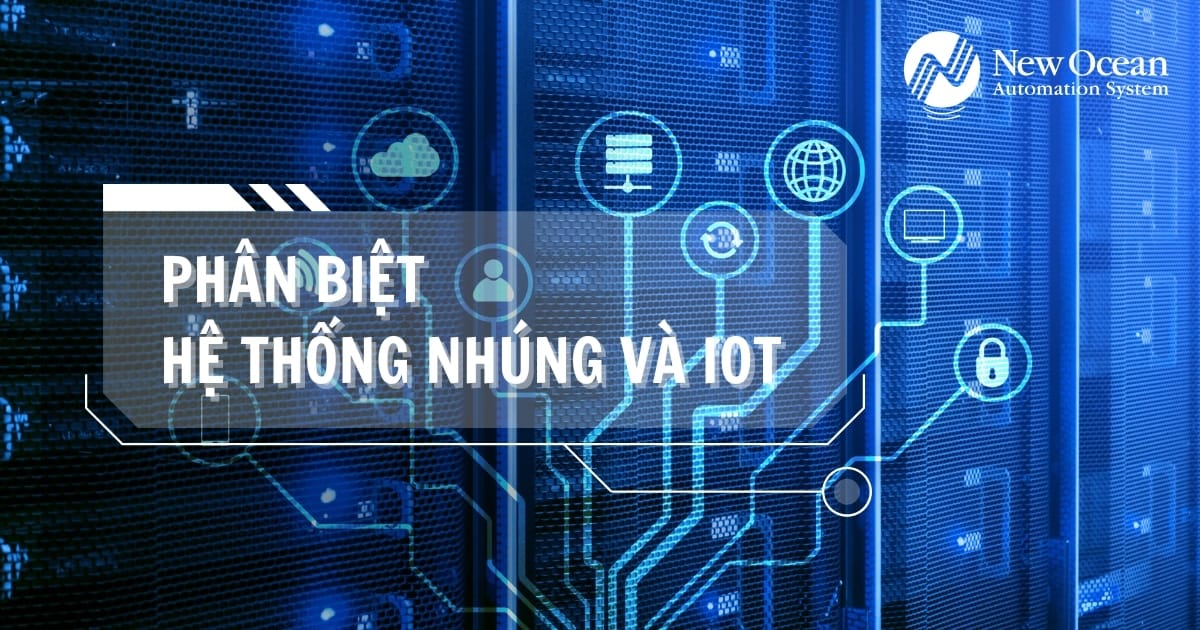Embedded System is a specialized computer system integrated into larger devices to perform one or more specific tasks, rather than serving general-purpose functions like a regular computer. These systems are optimized for stable, efficient, and energy-saving operation, often using hardware and software customized for the particular task. For example, the ABS brake control system in a car is an embedded system designed to ensure safety during braking.

The Internet of Things (IoT) is a network of smart devices connected via the Internet, allowing them to collect and share data with each other and with central systems. IoT devices can include sensors, industrial machinery, electronic gadgets, and many other applications, ranging from industrial manufacturing to smart homes.


>>> Read more: Applications of IoT in Industrial Manufacturing.
| Comparison Aspect | Embedded Systems | IoT |
| Overview | Focused on a specific task and integrated into a larger device to control its function. | Connects smart devices via the Internet to collect and share data. |
| Application | Controls individual devices, optimizing the operation of each device. | Manages and monitors an entire network of devices, integrating AI and data analytics. |
| Scalability | Limited, can only operate within the designed task scope. | Very high, can scale to millions of connected devices simultaneously. |
| Connectivity | Usually not networked or has only basic connectivity. | Always connected to the Internet for real-time data transmission. |
Embedded systems help businesses optimize production processes through automation and precise control of specialized tasks. For example, in an automated production line, embedded systems ensure that all operations run continuously without interruption.
IoT expands optimization capabilities by providing comprehensive information about every aspect of the production process. IoT sensors can monitor machinery in real-time, allowing businesses to perform predictive maintenance and prevent issues before they occur. This reduces downtime and saves on maintenance costs.
With IoT, businesses can monitor and adjust production processes remotely. This is particularly useful in situations requiring rapid changes, such as market fluctuations or when adapting to meet customer demand.
Embedded systems enable businesses to maintain tight control over each stage of production, ensuring high quality. When integrated with IoT, systems can automatically detect errors and respond quickly, reducing defective products and improving overall quality.
The combination of embedded systems and IoT helps businesses save costs not only in production but also in maintenance and operations. IoT systems monitor assets in real-time, prevent excessive wear, and provide early warnings of abnormalities, thereby reducing unnecessary maintenance expenses.
Combining embedded systems with IoT not only allows devices to perform fixed functions but also makes them smarter through connectivity and communication over the Internet.

In Smart Home Devices: Embedded systems control basic operations (such as adjusting temperature or operating modes), while IoT extends functionality by connecting to the Internet, making it convenient to monitor and adjust devices via smartphone or computer.
In Healthcare: Embedded systems monitor and control device operations, whereas IoT provides connectivity, data collection, and predictive support, helping detect potential issues early.
Embedded systems and IoT both play vital roles in driving innovation and automation in production. Embedded System optimize individual devices, while IoT expands the ability to manage and control entire systems, helping businesses enhance efficiency, reduce costs, and improve product quality. Combining these two technologies brings significant benefits to companies operating in modern manufacturing environments.
Contact us today for a free consultation!
----------------------------------------------------------
CONTACT INFORMATION
New Ocean Automation System Company Limited
Website: New Ocean Automation System
Hotline: 1900 0224
